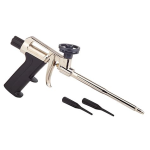rruff
Explorer
That was my thinking also. The cost isn't that high considering the benefits. Though to be fair, it seems that some people have good luck with very light campers using XPS with no core reinforcement, though some definitely have issues too. And the PVC will be ~0.3 lb/sq ft heavier with the same skins.
I've only use PVC with epoxy. Looks like PLP isn't even available in gallons? And buying the 28oz tubes in bulk costs ~$55/gal, so not much cheaper than epoxy. I used Ebond (slow cure) and like it a lot.
I think the best way to do it would be to coat the foam and ply with thin epoxy, let it cure for a few hours until it starts to harden, then bond the two together using thickened epoxy (fumed silica) that is troweled on.
I've only use PVC with epoxy. Looks like PLP isn't even available in gallons? And buying the 28oz tubes in bulk costs ~$55/gal, so not much cheaper than epoxy. I used Ebond (slow cure) and like it a lot.
I think the best way to do it would be to coat the foam and ply with thin epoxy, let it cure for a few hours until it starts to harden, then bond the two together using thickened epoxy (fumed silica) that is troweled on.


